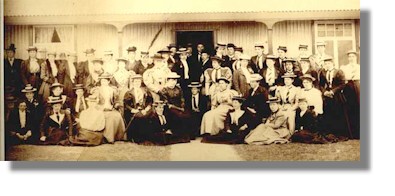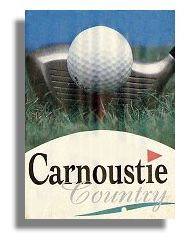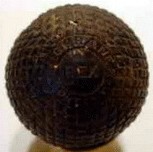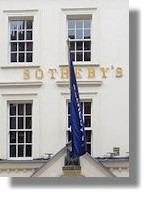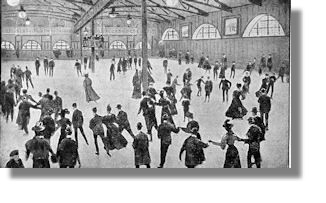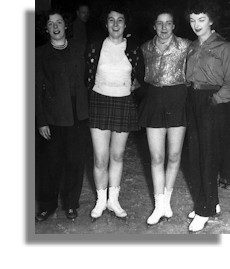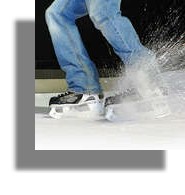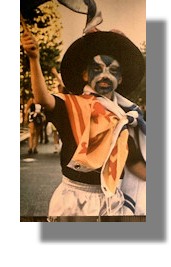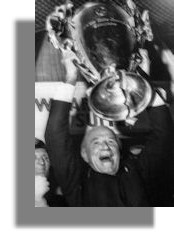Scottish Memory Lane - Sport
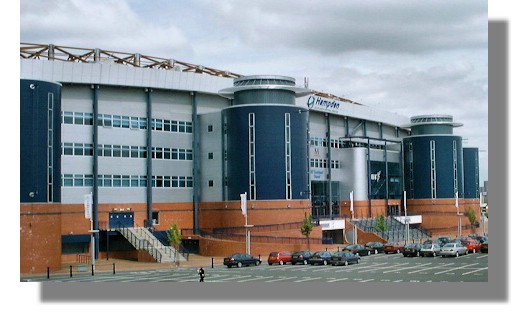
Hamppden Stadium, Glasgow
Articles based on readers' Memories of sport and sporting occasions related to Scotland, whether as a spectator or as a participant.I'm hoping that readers will send in their own stories and memories of their own childhood in Scotland. All contributions should be sent to Scottie@RampantScotland.com.
The Pro Am : The Visitor

Perhaps it is not necessary, but I feel I should warn those not familiar with the game of golf, or don´t remember Bing Crosby, that this memory is maybe not for them.
Golf was the background and the year was 1980, the location Sunningdale Golf Club in Surrey England. (Graphic of Sunningdale © Andrew Smith via Wikimedia Commons ). The occasion was my Company´s sponsorship of the European Ladies Open Golf Championship. The day before the four day competition was devoted to a ProAm (professional/amateur)competition in which Big Crosby was a playing guest, driving off at 9.30. I also played in the Pro Am, driving off at 9.50 (as an amateur of course). But as an employee, I also had a few duties to perform, one of which was to ensure that the hospitality marquee ran smoothly for a couple of hours from two o´clock until four. This was during afternoon tea and more important for guests, was the free bar!
There was also the possibility of the marquee being blown away in an afternoon of strong wind. Part of my job would be to keep it on the ground, and keep an eye on the free drinkers at the bar. So at two o´clock I was joined by my wife and we had lunch at a ringside table. (Graphic of marquee © Yuuf Gitay via Wikimedia Commons)
Before the competition day we employees were well briefed on the importance of protecting Bing from the autograph hunters. After finishing his round he would be driven to his hotel for lunch, then rest to recover from his trans-atlantic flight, and eighteen holes. However we employees would meet him at a cocktail party in the evening. He is here as a guest of our Chief Executive, and at all costs give him peace to enjoy the break.
So on to my two hour stint in the hospitality marquee. Afternoon teas in progress, the marquee still holding out against the gale force wind, and the invited guests round the bar were behaving themselves. With about fifteen minutes to go I was looking forward to a cuppa with my wife, when in walked Mr Crosby and his wife. They went to a table and sat down. Panic. I sought out the catering manager and arranged a side tent to be set up with a private table for Bing and his wife. By this time the entire bar drinkers were queuing at Bing´s table armed with bits of paper, as were other tea time guests. By the time the private room was ready the waitresses were also in a queue round the Crosbys. (Graphic of Bing Crosby via Wikimedia Commons. )
I approached the table and said "´m sorry about this Mr Crosby, but to give you some peace I have arranged a table in the ante room set up for you and your wife. Still scribbling his autograph on a menu card he glanced up and said "I´ve made a fortune from people like this. The least I can do is to sign my name for them"
I´ll never forget "the least I can do is to sign my name for them"
Alistair Macdonald. Beckenham. Kent. UK
The Women Golfers' Museum
The Women Golfers' Museum (WGM) also known as the Cecil Leitch Collection, was founded as a result of a proposal made by a speaker at the Annual Dinner of the Veteran Ladies' Golf Association in April 1938. It was officially opened a year later and was given a home at the Whitehall Court where it was held in safe keeping during WW2. After the War some difficulty was experienced in finding suitable accommodation, which had to satisfy two prime conditions - storage space and display accessibility. When the Whitehall Court could no longer afford the space required by a constantly expanding collection, the WGM was progressively found homes in several social clubs including the Devonshire and the Nineteenth Club, but again limited space became a problem, and a new location had to be found. The alternative was warehouse storage, or dismantling and dissembling. Keeping the museum intact proved to be an extremely difficult task, but in 1977 my employer then deeply involved in golf sponsorship, provided a display room for the complete collection at our head office in Oxford Street London. David Foster was the Chief Executive Officer, one of golf´s most dedicated golf entrepreneurs, and the founder of The International European Ladies Championship. He was the White Knight who probably saved the museum from incarceration in some tucked-away warehouse, out of sight, out of mind. The collection was housed in Oxford Street for about 3 years.The museum area was a former conference room on the first floor of an eight storey office block. The location was not ideal, and Oxford Street London was not particularly suitable for a golf memorabilia display. In fact during its first four months, only two visitors paid it a visit - two American ladies. That was a pity for the display area was expensively furnished with glass fronted display cabinets, and the floor area with glass-topped display tables. There was no museum staff, but I, as a marketing manager with the company, and a founder member of The British Golf Collectors´ Society, was invited to act as museum custodian and "Keeper of the Keys" I was delighted to accept this responsibility which fitted precisely into my range of golfing interests.
The collection at that time, 1977, numbered over 600 items - and was constantly being added to by lady golfers throughout the country, donating old clubs, balls, books, trophies and other early golf memorabilia. A sample of the inventory included - Clubs: about 50 and ranging from a Rut Niblick from around 1850 to a 1900 putter made by Mills of Sunderland (in WWI the company abandoned golf clubs and turned out over 5 million Mills hand grenades) Balls: Over 50 and including many Gutties (pre 1900) and Featheries (pre 1850) Trophies: Donated by golfers from all over Britain. Books, many rare and including "Golf, a Royal and Ancient Game" by Robert Clark, and printed by W & R Chambers of Cupar Fife in 1875. It was and still is believed to be the first book on golf ever printed. Other artefacts include medals, trophies, photographs and personal golfing mementos.
Also on display the renowned, and certainly known to all lady golfers of the time, a centre floor glass cased model of Gloria Minoprio (pictured on the left). Gloria, and her remarkable attire. The uniform consists of sweater, slacks and hat , and all achieved national prominence in 1933. The location was Gleneagles, and the occasion the Ladies´ British Open Championship. On the tee Miss Gloria Minoprio wearing trousers, an attire never before witnessed being worn by a lady golfer (or any lady for that matter) Not only were the trousers sufficient to attract maximum attention, and much criticism, but Gloria was also wearing overall white make-up. Her hat, sweater, trousers and shoes were black. She was also carrying only one club, a cleek, or rather her caddy walking behind her, was the bearer.
She entered the Championship in six successive years. The first day of the competition was always a Monday, and for five years she never got past day one. This prompted Henry Longhurst, at that time golf correspondent to The Sunday Times, to title his report "Sic transit gloria mundi" On Gloria´s sixth attempt she advanced to day two, and Henry´s headline was "Sic transit gloria Tuesday" The unique outfit was donated to the Woman Golfers´ Museum by Gloria herself.
Visitors to the Oxford Street museum were still few and far between, but it was quite a shock to me the custodian on a morning visit to the museum, to find the transport company Pickfords taking an inventory prior to crating and shipping the entire collection to the States. I had been out of the office for a few days and had borrowed a book from the museum collection to pass away the time in my hotel. The book was The Art of Golf by Sir W G Simpson 1887, and I was returning it to the shelves. The museum had two copies and Pickfords had already noted and reported the absence of one copy. In a state of deep concern I was devastated and made an appointment to see the CEO. David Foster who explained that as the company needed the office space one of the advertising agencies had been briefed to investigate a British museum willing to take the collection. They had failed to find one - no space, and had reported the failure. The CEO had no alternative, with the approval of the Chairman of the WGM, to offer it to a suitable museum in the US. Pickfords was stage one. The selected American museum was The Golf Hall of Fame, St Augustine, Florida, with arrangements negotiated by the company Head Office in New York. I pleaded for time to contact more UK museums in the hope of acceptance, either warehousing or display or ideally both. To my grateful surprise a two weeks moratorium was granted, but if no success, crating would begin.
First attempts produced no success, but did reveal that museums in Scotland had not been approached. In fact it appeared that discussions had taken place only with the British Museum in London, who advised that they knew of no British museum large enough and with sufficient display space to accommodate the museum. Learning of this "oversight" I made contact with The Peoples Palace Glasgow. No space, but followed their advice, by Gleneagles Hotel. The Spalding Collection Dundee, The North Berwick Museum, and, on the point of giving up, Edinburgh was next on the list, and fortunes took a dramatic turn. Success. The Deputy Keeper was enthusiastic and the Director agreed, "But can we see it first?" This from The National Museum of Antiquities, Queen Street, Edinburgh (Pictured on the left, though now the National Portrait Gallery). Arrangements were made for a viewing in London, and agreement reached. We would ship and insure the collection (including the display cabinets) as soon as possible, and there we pick up the narrative from Rosalynde Cossey´s book "Golfing Ladies".
´When Colgate withdrew from sponsorship, the museum was homeless for some time. The exhibits were nearly transported to the USA, but this intention was discovered during a conversation between the museum´s solicitors and the current chairman of the trustees, Miss Maureen Millar . . . . . Today the museum which still acquires important items, is on loan to the National Museum of Antiquities, Queen Street, Edinburgh.
Not quite accurate, although broadly true, but appearing to give the spectators, not the players credit for the victory. The Woman Golfers´ Museum is no longer in Edinburgh. Once again the problem of available space confined the collection to the store room. Plans for an additional space in new galleries in Queen Street had not materialised. This was not known until by chance. On a business trip to Edinburgh I visited Queen Street, and was dismayed to find no WGM artefacts in any of the display cabinets.
So the search started again, but this time no Pickfords and no crating deadline. The WGM Chairman was briefed on developments, and it was decided to make contact with the newly opened British Golf Museum in St Andrews. After lengthy discussions, they agreed to accept the WGM on loan as it is today, with a few reservations - the bulk of the museum would be stored in warehouse with, when space was available, sections displayed in the museum. Parts would be loaned to smaller national museums on request. Books, magazines and historical documents would be housed at The University of St Andrews Library. This was agreed as an excellent solution to a long lasting problem - home at last.
An extract of a letter received by me from Maureen Millar at the time, the Chairman of The Women Golfers´s Museum, reads -
Without you, this chain of events would never have happened, and we do appreciate it.....
All´s well that ends well, and the Women Golfers´ Museum now rests from where many of the artefacts originated, but if I hadn´t been a member of the British Golf Collectors´ Society, and an amateur researcher into the history of golf....... Sic transit gloria mundi
Alistair Macdonald Beckenham, Kent UK
Additional Comment from the current Chairman of the Women Golfer´ Museum:
It is true that the Women Golfers´ Museum collection is no longer displayed in its entirety. The museum artefacts are now with the British Golf Museum, St Andrews. Many of the WGM items are out on general display, illustrating the history of golf development, but the Trustees are also pleased to say that the BGM has put on two recent exhibitions devoted to Women´s Golf. The paper memorabilia, albums, scrapbooks photographs, pictures and books are with the Special Collections Unit of the University of St Andrews, and a programme of digitalisation is about to commence. The Women Golfers´ Museum has always had a Board of Trustees, and the current Board is active and takes a strong interest in the collection, its upkeep and its availability for research. The website www.womengolfersmuseum.com contains details of the collection and also information on the history of ladies golf. Items are still being lodged with the WGM collection... please get in touch with Gillian Kirkwood, chairman@womengolfersmuseum.com or John Pearson, secretary@womengolfersmuseum.com for further details.
NOTE: Most of the historic graphics used in this item are reproduced here by kind permission of the Women Golfers´ Museum
Lifelong Loyalties
I read many years ago that once anyone becoming a supporter of a sporting club at an early age they usually maintained their support with that club for the rest of their lives. Often they adopted a club without really knowing whether the team was worth supporting - and continued to follow that club through thick or thin, wins or relegation. That has certainly been the case with my support for Saint Johnstone Football Club. I had gone with my Dad, Granddad and cousins to Muirton Park in Perth on New Year´s Day about 70 years ago now. Saints had won 6-1 that day against Dundee in the local "Derby" - and my cousins came from Dundee, so that added to the pleasure! I have to admit, however, that I knew so little about football at that time that I thought that the team playing in blue was Dundee - and that team was 3-1 up at half-time. My depression soon lifted when it dawned on me that it was my team that was playing in blue - and we were winning!
Since they were clearly such an excellent team - and my Dad and Granddad both supported them - it seemed obvious that I should do the same. Of course, since I lived in Glasgow I didn´t get many opportunities to see them play, but over the years I eagerly looked at their results each Saturday. I soon realised that they didn´t always win 6-1 and in fact could lose all too frequently! But I never thought for a moment of changing my support to say, Glasgow Rangers.
Over the years, although they occasionally got relegated from the top division and had to fight to get promoted back again, Saints managed on occasions to get quite far in the Scottish Cup and on one occasion I managed to get to see them playing Rangers. I had attended so few professional football matches that I didn´t know about going to the section of the stadium where the other Saints supporters were gathered - and found myself surrounded by Rangers fans... So when Saints scored first I had to restrain myself from celebrating in case I caused offence! On another occasion I went to another Cup match against Rangers with my young son - who had become a Rangers supporter for some strange reason (maybe they won more often that Saints?) Saints rose to the occasion and managed a 1-1 draw which satisfied me (but not my son). Rangers won the replay though!
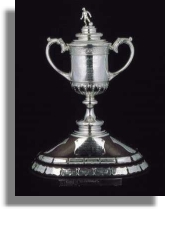
Of course the greatest moment in all those years of supporting Saint Johnstone was in 2014 when they won the Scottish Cup. They had come from behind to beat Aberdeen in the semi-final. And they were playing Dundee United in the final and won 2-0. This was the first time in the club´s history they had won the trophy. It was worth the wait!Scottie from Glasgow
The Black Ball - Golf Memorabilia
I started playing golf when I was eight years old. This early age was not the outcome of any plan; it was simply that my aunt won a ladies´ competition at Carnoustie; the prize was half a dozen clubs in a bag, and she gave me her old ones, together with my first golf lesson.
Eighty-five years later I hung up my clubs (not my original ones of course!) for the last time. During those golfing years I took an interest in the history of the game, and became a keen collector of golf memorabilia, and I remember clearly what started it off. It was about fifty years ago, and the trigger was a newspaper report that a dealer in north London was shipping old golf clubs to America and Japan by the crate load. Remembering the disappearance of brass candlesticks from Scotland some years before, I decided in a small way to keep our golf memorabilia in the country of its origin. My plan - I would seek out, say a couple of dozen old hickory shafted clubs, and store them in the garage until I could find a more suitable depository for them. Once started it was very difficult to stop, and for many years I continued my self appointed mission. In the course of time I accumulated other old golf paraphernalia mainly, in addition to hickory shafted clubs, my searches embraced other golf artefacts, such as golf balls, trophies, the creation of a historical golf library, and started a study in the history of golf. (Graphic here is of a memorial in St Andrews to Old Tom Morris a golf champion of yester year).
But my memory is fixed on a single incident which was enacted in the Barrowlands Market in Glasgow on a wintry Sunday morning. For those who are not familiar with "The Barras" it is a rundown part of Glasgow, a section of which was devoted to all things old - a multiple junk shop. My morning´s search hadn´t borne much fruit, but in one of my regular sources, a building which had the appearance of a disused motor car workshop. I had called there a few times before, but this morning as I was leaving again empty-handed, I noticed a battered brass jam pan containing well-used golf balls with a sign stating "Any ball for 10p" They were just old, grey and cut golf balls, but always the optimist, I rummaged through them "just in case" And there it - was a black ball. I picked it up and nodded to the hovering boss. He looked at the ball, looked at the sign and said "You can have that one for 5p, but why have you chosen a black ball when everyone else looks for the whitest?" I replied, perhaps a bit unwisely "You don´t think I´m going to play with this one do you?" and made a bee-line for the street.
My find was a solid ball, a gutty, moulded from the Malaysian guttah perch gum, and invented by Dr Robert Patterson of St Andrews in 1850. I added the black treasure to my existing golf ball collection, but in a place of honour. It was my first gutty.
Years passed and my collection of golf memorabilia, like Topsy, "just growed" but my museum was becoming overstocked, and this prompted one of the most difficult decisions of my life. My golf collection had to go before the loft floorboards gave way.
I put my historical golf memorabilia up for auction at Sotheby's in Bond Street London, and there one sad morning it went under the hammer. (Graphic of Sotheby´ s in London © Dirk Ingo Franks via Wikimedia Commons The tatty old balls were auctioned first, with my Barras black ball in the lead, now realising its true value which was a bit more than the 5p purchase price! This was followed by the sale of my original target of a couple of dozen old hickories, but now numbering nine-hundred-and-seventy-six hickory-shafted golf clubs all completely renovated. There were many exciting and memorable occasions during my collecting years, but firmly imprinted on my memory is the excavation of that black ball in the Barras.
Alistair Macdonald, Bromley, Kent. UK
Crossmyloof Skating Rink
It is Saturday morning , heading to Crossmyloof skating rink in Langside, Glasgow meeting up with my girlfriends. Crossmyloof was the first indoor ice rink in Scotland and opened in 1907 beside the railway station. A new company was formed in 1928 and this built a new larger ice rink on the same Titwood Road site. It measured 225 feet by 97 feet and had seating for 2000 spectators and was probably the longest ice rink in Britain. Crossmyloof ice rink eventually closed in 1986. The illustration here is of Crossmyloof Ice Rink in 1909.
I had on my green felt very short skating skirt with fancy embellishments sewn around the seams - thought I looked the bees knees. I owned skates but was fairly useless at staying upright. But anyway we only came to see the boys - we were about 13, 14 years old. If theboys were interested in you they would give you their school scarf to wear around your neck and skate round and round to the hit parade - what fun. (Although the illustration on the right is of skaters at Crossmyloof, Gereth is not in this picture!)
The favourite song that was played was "Diana" by Paul Anka, it was one of the best, afterwards we would cross the road for an ice-cream from one of the ice cream vans parked nearby.
My father owned a chemist shop at the corner of Cumberland St and Aikenhead Rd called "The 5 Corners" and I headed there after skating to help out on Saturday afternoons. The buses streamed past that intersection heading to Hampden Park either for International matches or for the Cup Finals, often involving Celtic and Rangers. The crowds were full of life but jeering and yelling at one another. Such great memories of my teen years!
Gereth McCaskill, now living in Vancouver Canada.
Are They Bearing Yet?
Every year about the middle of November, the call was heard throughout the land "Are they bearing yet?"
The question related in Dundee to the Stobsmuir Ponds locally known as The Swannie Ponds (graphic here of Stobsmuir Park and its pond in the distance is © "Freethinker" via Wikimedia Commons). The question, so anxiously and repeatedly posed was - when can we get our skates on? The season never let us down, and I can ´ t remember the ponds ever being closed for skating in winter. However in some years they took their time, and until the park wardens declared them bearing, no one was allowed near them, but as soon as the word was given it spread like wildfire. "They ´ re bearing"
One year will stay with me forever. I was about a ten year old and they were bearing; my skates were screw-on to old football boots, otherwise no part of my attire changed for the big day. I joined the throng heading for the frozen water.
Skating to me and my companions was devoted to speed - certainly no fancy figures, and dancing on ice was unheard of. The ponds were about half a mile from home; through the Baxter Park and a track was worn over the grass until about March of the following year. Strangely, although skating was banned until the ice was thick enough to bear dozens of skaters of all ages, there was no ban when the ice was melting and not able to support the weight of skaters.
We continued skating on floating platforms of ice sinking into the water under our weight. This demanded new skills - skating over and off one sinking slab and on to its neighbouring piece before it too sank. It was a new skill, but not one with a polished expertise. It only happened once with me and that memory refuses to fade. On this occasion I failed to vacate one sheet before sliding gracefully under its neighbouring floater.
The ponds were only about a couple of feet deep, but I found myself sitting on the bottom, legs under the neighbouring sheet and soaked to the waist.
Pulling myself out from under I can still clearly remember sitting on a pond-side bench struggling to get my old, soaking football boots off my feet, then a miserable cold and wet walk home. But next winter "Are they bearing yet?" was still eagerly sought.
Alistair Macdonald, Bromley, Kent, UK.
Victory International
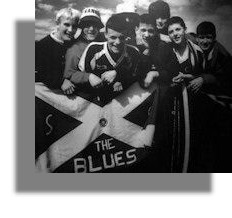
I remember a day when I was still staying with with my Gran & Granpa in Cathcart, and I heard a tremendous sound from somewhere outside that rattled a window, and shook the cups hanging from hooks in the kitchen. I asked my Granpa what it was, and he said, "Och that was the Hamden Roar, somebody must have scored for Scotland"! I later learned what Internationals wi`the Auld Enemy were, and if I recall correctly the goal scored on that occasion won the game for Scotland, by, I think, a player called Dodds.
Later, after the end of World War II, I remember getting a free ticket at school, along with all the football team, to attend what was called the Victory International against England at Hamden, and played my part in the famous Roar, when Jimmy Delaney of Celtic poked his leg through a melee of players at a corner kick for Scotland, and flicked the ball into the net to win the game for Scotland!! Believe it or not, playing for Scotland that day was Matt Busby! Also playing for Scotland that day was Jimmy Carrabine of Third Lanark, and both he and Matt, along with a number of other Scottish players, had served in the war in India and Burma.
Matt Busby (pictured here) later became manager of Manchester United, and made them famous, and also survived when the plane carrying Man.U. back from a tour in Germany, crashed and some famous English players were lost.
Dave, now in Calgary, Alberta, Canada.
Return to Index of Memory Lane.
